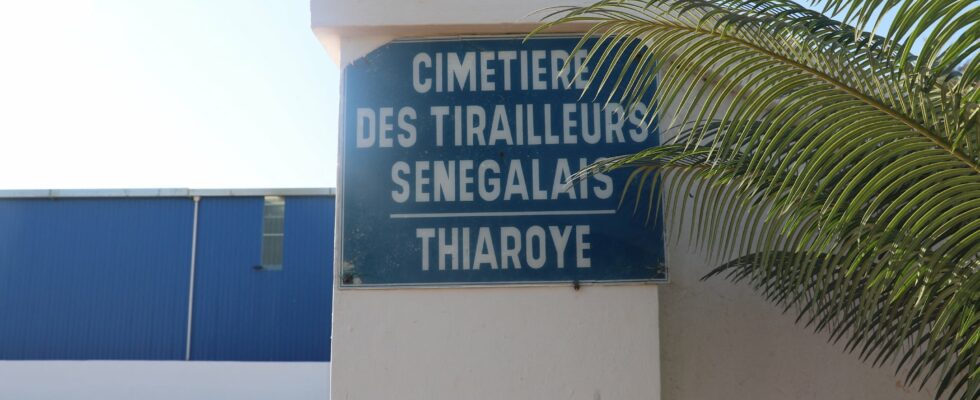This is an unprecedented memorial decision in a painful issue between France and one of its former colonies. Six African riflemen, executed with dozens of others on the orders of French army officers in Thiaroye, Senegal, in 1944, have been recognized posthumously as having “died for France.” “This gesture is part of the commemorations of the 80th anniversary of the liberation of France as well as in the perspective of the 80th anniversary of the events of Thiaroye, in line with the memorial of the President of the Republic who wants us to look our history ‘in the face’,” the French Secretary of State for Veterans and Remembrance told AFP on Sunday, July 28.
This mention of “Morts pour la France” was attributed by a decision dated June 18th to these six riflemen by the French National Office of Combatants and Victims of War (ONaCVG). It concerns “four riflemen from Senegal, one from Ivory Coast and one from Upper Volta” (now Burkina Faso). This first decision “may be completed as soon as the exact identity of other victims has been established”, specified the State Secretariat.
On the morning of December 1, 1944, at the military camp of Thiaroye, a town not far from the Senegalese capital Dakar, French colonial troops and gendarmes had opened fire on the orders of French army officers on repatriated riflemen who were demanding their back pay. According to the report drawn up by the French authorities at the time, at least 35 riflemen had died, on the spot or from their injuries. A figure that remains controversial, with historians estimating it to be much higher.
The place of burial of the dead soldiers, in individual graves or mass graves, in Thiaroye or elsewhere, is also a matter of debate. The trauma and memory of this massacre are still vivid in Senegal and on the African continent.
“Face history”
Breaking with a practice of denial, former French President François Hollande had officially paid tribute during his mandate to these riflemen massacred by the colonial army in Thiaroye. “After the declaration of President François Hollande 10 years ago, this is a new step. It was essential, it is now time to look at this history, our history, as it was,” added the Secretary of State this Sunday. The French corps of “Senegalese Riflemen” – created under the Second Empire (1852-1870) and dissolved in the 1960s – brought together soldiers from the former French colonies in Africa, including Senegalese, Sudanese (now Malians), Voltaic (now Burkinabe), and Ivorians.
The term “Senegalese rifleman” ended up designating all the soldiers from Africa who fought under the French flag. They took part in the two World Wars and the wars of decolonization. This decision by the Secretary of State is “a coherent choice that allows us to look at history in the face of a very painful page of Franco-Senegalese history”, reacted the president of the Association for the memory and history of Senegalese riflemen, Aïssata Seck, interviewed by AFP.
“These soldiers have just received the recognition they deserve,” she continued. Before adding: “This French recognition is a major step towards healing a memory that can only be shared between our two countries.” Aïssata Seck also considers it “important” to “work to ensure that archaeological excavations of mass graves are permitted, which will allow us to have the real figure for the number of victims.”
The approximately 1,300 riflemen gathered at the Thiaroye camp – former prisoners of war of the Germans who had taken part in the fighting in 1940 – had embarked in France in early November 1944 to be sent back by boat to Dakar. After arriving at the camp more than two weeks later, they revolted against the delay in the payment of their back pay, several refusing to return to their countries and homes without being paid. The events of December 1944 inspired a film, “Camp de Thiaroye”, made in 1988 by the famous Senegalese filmmaker Ousmane Sembène and his compatriot Thierno Faty Sow.
